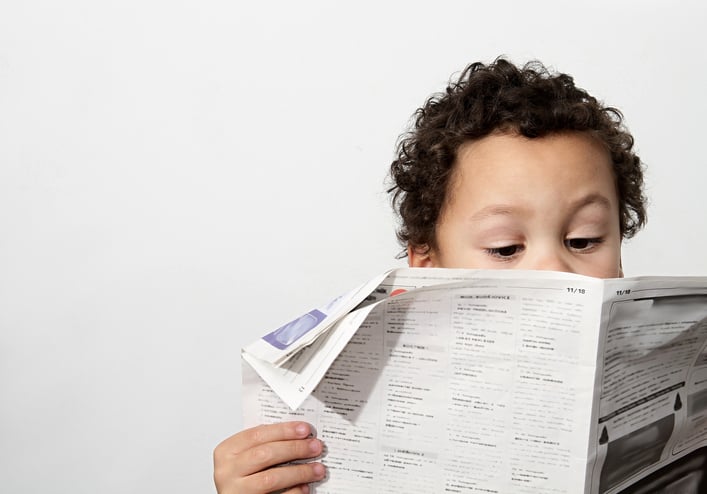How to Teach Sight Reading to Autistic Children
Teaching sight words to your autistic child is an important part of your child’s literacy development. Many autistic children experience delays in reading and writing. Oftentimes, autistic children are visual learners and benefit from multiple methods of instruction to learn.
This article provides some background about sight reading and recommendations for the best strategies to support your child as they learn sight reading.
What Are Sight Words?
Sight words are frequently used words such as “I, the, to, is, and,” etc. They’re called “sight words” because they are short, easily recognized, and cannot be easily sounded out.
Because sight words cannot be easily sounded out or illustrated, they can be difficult for emergent readers to decode. Sight words make up approximately 50% of text, so children must memorize these words.

Why Learning Sight Words Is Important
Children must learn sight words because sight words are not easily decodable. Once children master sight words, they can understand at least half of what they are reading. When children can immediately recognize and read these words, they can focus on learning other vocabulary. They can read more accurately, efficiently, and fluently. This later allows for improved reading comprehension.
Matching Sight Words Lesson Plan
Matching games are a fun way to introduce words and take a break from reading and decoding.
Use the STAGES® Learning Language Builder: Sight Words & Phonics Cards to practice matching identical sight words with your child.
Note: No two students follow the same path to reading proficiency. If a student shows ease in learning sight words and struggles to read phonemically (sounding out a letter such as the “b” in bat), it’s good to be flexible, possibly introducing more words in this sight-word lesson format before committing to phonetic-only reading instruction.
Procedure:
- Sit in a chair or on the floor across from your child.
- Make sure you have their attention.
- Place one Language Builder: Sight Words & Phonics card in front of the child.
- Hand the child the corresponding card and ask the child to match the cards.
- Prompt the child with “Match the word,” “Put with same,” or “Put the word [for] with the word [for].”
- Reinforce the child as appropriate.
As your child progresses and becomes more confident in matching, add more matching cards one set at a time.
Generalization:
Once your child can match words:
- Have the child match words with another adult and in different settings.
- Have the student match the words to words in books or other materials.
- Play a memory card game using sight words.
- Begin practicing reading the words and noticing the letters in each sight word.
Ways to Engage Children
 Not all children will learn best using flashcards. Engaging your child through art, movement, and speech will support their learning and make practicing sight words fun.
Not all children will learn best using flashcards. Engaging your child through art, movement, and speech will support their learning and make practicing sight words fun.
-
“See and Say”
If your child is ready, use flashcards to practice “seeing” and “saying” the sight words. Encourage your child to point to the word and underline it with their finger. Extend the practice by asking your child to spell the word out.
-
“Arm Tapping”
The child says the word and then spells out the letters while tapping them on their arm.
-
“Table Writing”
Present the child with a sight word and have them trace the letters with their fingers. For added fun, have your child trace the letter in shaving cream, sand, or paint.
-
“Build It”
Use manipulatives to build the word letter by letter. Use letter magnets, and Scrabble tiles, and create the letters using play-dough, or blocks.
-
“Use It”
Open up a favorite bedtime story and play “I Spy” with sight words: “Can you find sight words in your favorite book?” Better yet, practice reading the sentence that the sight word is in if the child is ready for that level of reading.
Tips for Teaching Children
-
Break down instruction.
Learning to read can be a daunting process. Slowly introduce different concepts and consider what your child is learning in school so they do not become overwhelmed. -
Use multisensory techniques.
Every child learns differently, so take time to explore what teaching techniques work for your child. Incorporate movement, art, music, and communication into different lessons. -
Incorporate learning into everyday tasks.
Reading is all around us. Whether you’re in the house, running errands, or driving around, make an effort to draw attention to words that you see. Put closed captioning on the TV, or read store signs aloud as you pass them. You can even use words on a box of cereal or make a screensaver for your computer that brings up different sight words. -
Reinforce.
For some children, learning to read can become frustrating. Make sure to regularly reinforce positive reading habits and successes to show your child that you recognize the hard work they’re putting in. Offering reading breaks, a promise to buy a new book or other positive reinforcements will maintain your child’s interest and keep them from becoming burnt out. -
Choose their favorite books.
Incorporating your child’s favorite storybooks into learning and exploring will be motivating. Trips to the library make reading fun.

To get started, here is a list of 20 of the easiest sight words to begin teaching your child sight reading. For more words, download our free sample ARIS Lesson 154 from the ARIS® Academic Readiness Intervention System Language Builder.
|
I the a of was to and is you for |
what he are were in that it but on all |

This article was based on the following research and online resources:
https://sightwords.com/sight-words/lessons/
https://www.theprintableprincess.com/what-are-sight-words-and-why-are-they-important/
https://www.kindergartenworks.com/kindergarten-teaching-ideas/how-to-teach-sight-words/







